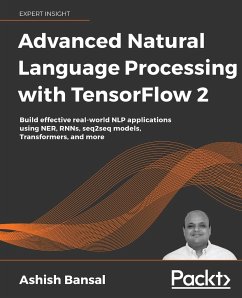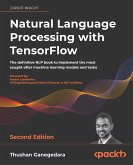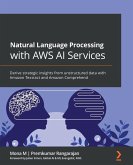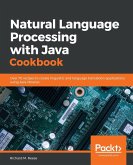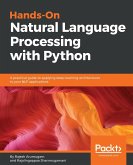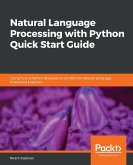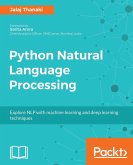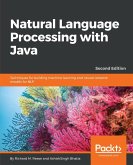One-stop solution for NLP practitioners, ML developers and data scientists to build effective NLP systems that can perform real-world complicated tasks Key FeaturesImplement deep learning algorithms such as BiLSTMS, CRFs, and many more using TensorFlow 2 Explore classical NLP techniques and libraries including parts-of-speech tagging and tokenization Learn practical applications of NLP covering the forefronts of the field like sentiment analysis and generating text Book Description In the last couple of years, there have been tremendous advances in natural language processing, and we are now moving from research labs into practical applications. Advanced Natural Language Processing comes with a perfect blend of both the theoretical and practical aspects of trending and complex NLP techniques. This book is focused on innovative applications in the field of NLP, language generation, and dialogue systems. It goes into the details of applying the concepts of text pre-processing using techniques such as tokenization, parts of speech tagging, and lemmatization using popular libraries such as Stanford NLP and SpaCy. Named Entity Recognition (NER), a cornerstone of task-oriented bots, is built from scratch using Conditional Random Fields and Viterbi Decoding on top of RNNs. Taking a practical and application-focused perspective, the book covers key emerging areas such as generating text for use in sentence completion and text summarization, bridging images and text by generating captions for images, and managing dialogue aspects of chatbot design. It also covers one of the most important reasons behind recent advances in NLP - applying transfer learning and fine-tuning using TensorFlow 2. Further, it covers practical techniques that can simplify the labelling of textual data which otherwise proves to be a costly affair. The book also has a working code for each tech piece so that you can adapt them to your use cases. By the end of this TensorFlow book, you will have an advanced knowledge of the tools, techniques and deep learning architecture used to solve complex NLP problems. What You Will LearnGrasp important pre-steps in building NLP applications like POS tagging Deal with vast amounts of unlabeled and small labelled Datasets in NLP Use transfer and weakly supervised learning using libraries like Snorkel Perform sentiment analysis using BERT Apply encoder-decoder NN architectures and beam search for summarizing text Use transformer models with attention to bring images and text together Build applications that generate captions and answer questions about images Use advanced TensorFlow techniques like learning rate annealing, custom layers, and custom loss functions to build the latest deep NLP models Who this book is for This is not an introductory book and assumes the reader is familiar with basics of NLP and has fundamental Python skills, as well as basic knowledge of machine learning and undergraduate-level calculus and linear algebra. The readers who can benefit the most from this book include: Intermediate ML developers who are familiar with the basics of supervised learning and deep learning techniques Professionals who already use TensorFlow/Python for purposes such as data science, ML, research, and analysis
Hinweis: Dieser Artikel kann nur an eine deutsche Lieferadresse ausgeliefert werden.
Hinweis: Dieser Artikel kann nur an eine deutsche Lieferadresse ausgeliefert werden.

